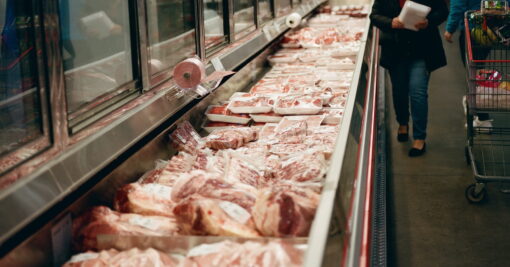Retail meat prices have increased to record high levels over the last year and a half, like many other items. But, unlike other goods, beef, pork, and chicken prices have some unique market characteristics affecting their prices. This SAT article examines retail beef, pork, and chicken prices that are part of the monthly Consumer Price Index (CPI).
Retail pork prices really began to increase in March 2021. Since then pork prices have increased from $4.17 per pound to $5.05 in October 2022. The latest CPI report, issued last week, reported retail pork prices in November at $4.95 per pound. For the first time this year, the retail price was below the prior month. The average pork price remains above last year, however. High feed costs, disease issues, and a lack of hog producer profits have kept pork production below a year ago. Wholesale prices, as measured by the pork cutout value have, generally, been below 2021 most of the year.
Retail chicken prices have declined for the last 2 months since hitting a high of $1.89 in September. November’s average price was $1.84 per pound well above the $1.58 of last November and the 5-year average November price of $1.50. High wholesale chicken cut prices led to increased production earlier this year and now wholesale prices are at or below the five-year average.
Like pork prices, retail average Choice beef prices began to increase in March 2021. They increased from $6.48 in March to a record $7.90 in October 2021. Since then, retail Choice beef prices have been flat to slowly declining, falling to $7.37 in November. In contrast to pork and chicken, beef prices have been lower than last year since August. Drought has forced herd culling which has kept beef production higher than in 2021. The Choice boxed beef cutout has been lower than in 2021 most of the year.
Monthly average retail meat prices have been slow to respond to lower wholesale prices this year. Several months of declining beef prices have made beef relatively less expensive than other meats. Falling wholesale prices will allow some room for retail prices to decline further in 2023. The effect of higher interest rates and tightening budgets for many consumers may change consumer purchasing patterns and allow for further retail price declines in the new year.
Merry Christmas from all of us livestock economists at Southern Ag Today!




Author: David Anderson
Professor and Extension Economist Livestock and Food Products Marketing, Dairy, Policy
danderson@tamu.edu
Anderson, David . “Retail Meat Prices Finally Decline.” Southern Ag Today 2(52.2). December 20, 2022. Permalink













